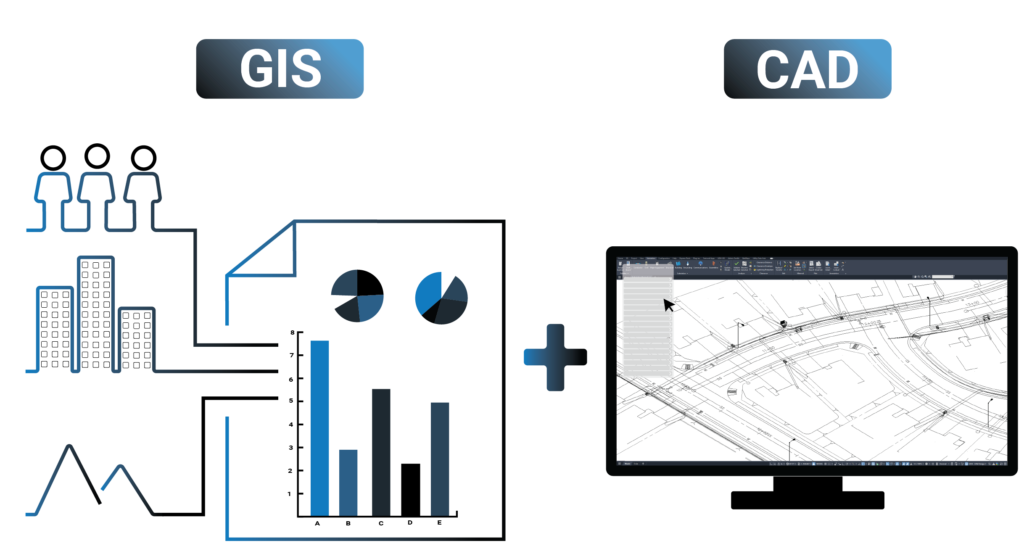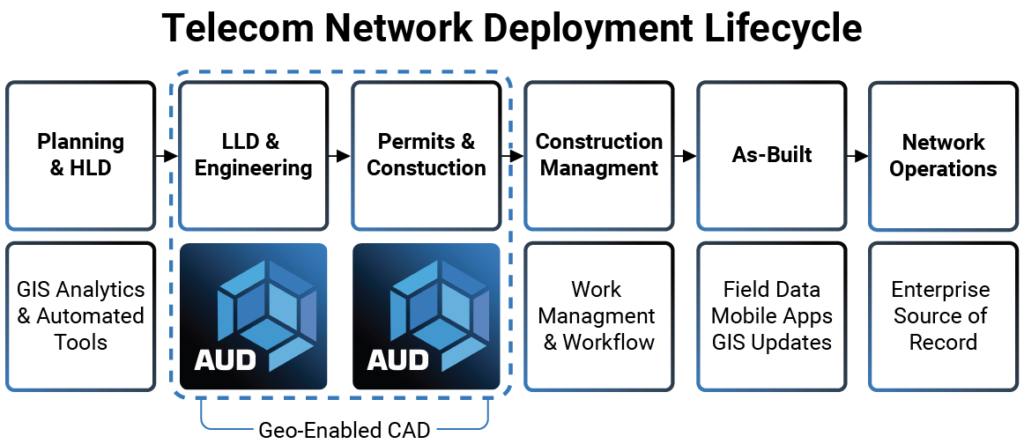Imagine a future where high-speed internet is within everyone’s reach.
By 2026, the Fiber-to-the-Home/Building (FTTH/B) market is expected to hit $29.7 billion 1, marking an unprecedented milestone in the telecom industry. With over 100 million homes in the U.S. alone still in need of fiber connections, the next decade promises rapid deployments aimed at connecting an ambitious 10 million premises per year 2. However, this monumental task is not without its challenges, particularly in detailed design, engineering, and permitting, which significantly impact project costs and schedules.
The hurdles faced by Communication Service Providers (CSPs) and telecom design and engineering firms during the Low-Level Design (LLD) and Engineering phases are multifaceted:
- Scarcity of skilled labor.
- Reliance on manual processes.
- Non-standardized design rules.
- Complex permit requirements.
These lead to inefficiencies, missed deadlines, cost overruns, and project delays in construction and asset management, underscoring the need for streamlined processes and standardized engineering specifications in the design process in order to meet time-to-market and budget goals.
Traditional network design and engineering for FTTx networks require a level of precision, granularity, and expertise that has become increasingly difficult to sustain. The impending retirement of employees in essential infrastructure services exacerbates this skilled labor shortage, while demand for civil engineering and computer-aided design (CAD) positions is expected to rise. This scenario creates a bottleneck that CSPs and Architecture, Engineering, and Construction (AEC) firms must navigate strategically, especially those with smaller teams.
Key requirements for FTTx Network LLD, Engineering, Construction and Permitting:




GIS and CAD: Using the Best Tools for the Job
Historically, Geographic Information Systems (GIS) have been sufficient to identify optimal fiber optic installation sites and plan expansions efficiently. With the increasing demand for detailed design, engineering, and construction packages, the industry now requires CAD-based solutions that a novice workforce can easily adopt. Moreover, integrating GIS and CAD through the network deployment life cycle not only increases productivity but also facilitates sharing overhead and underground infrastructure data with key stakeholders like utilities and local government, leading to streamlined make-ready and joint-use processes and helping conserve project resources.
The industry’s drive towards faster, quality-assured deployments calls for an integrated solution that leverages both GIS’s spatial intelligence and CAD’s engineering accuracy.

SBS’s Intelligent Design Platform
As the telecom industry grapples with the challenges of detailed design and deployment, innovative solutions are paving the way for a more efficient future. Scott Casey, Vice President, Telecom at SBS, is positioning its Intelligent Design Platform to overcome these challenges.
SBS’s Automated Design (AUD) is a geo-enabled Intelligent Design Platform that leverages industry-standard AutoCAD software and standardizes the design process for telecom network models from the start with configurable, no-code templates and a rules engine. The platform addresses the need for streamlined workflows and promises to transform how CSPs and engineering firms approach network design and deployment.

“Service providers and engineering firms have long struggled to extend GIS into the CAD world and make working in GIS and CAD a seamless process. We’ve solved both problems with our Intelligent Design Platform. Integrating GIS and CAD data and workflows streamlines design, engineering, permitting, and the creation of construction-ready packages. Our solution offers task automation capabilities that cut detailed design time in half or better while increasing quality. This translates to faster time-to-market, less rework, and fewer surprises that throw budgets and schedules off track,” states Casey.
Model-Based Design
In AUD, designers draw a 2D object using a typical CAD workflow. As features are modified in the 2D environment, AUD maintains a 3D model (or “digital twin”) in the backend. The model contains critical physical details and topology information, auto-validates standards, and automates many essential functions within the design workflow.

Users can benefit from time-saving automations and consistency throughout the design process, reducing design cycles by as much as 50% and cutting training time by 70%.
A (3D) Vision for the Future
Looking ahead, the future of telecom design is unequivocally tied to the adoption of CAD-based, automated, and geo-enabled platforms like AUD. This synergy enables the creation of digital twins using augmented reality (AR) to visualize, evaluate, and validate network designs efficiently.
- Digital Twins enable CSPs and AEC firms to use real-world virtual models of networks and infrastructure to visualize, evaluate, and validate designs and changes before implementing them.
- Augmented Reality (AR) is about more than gaming and consumer applications. It can reduce maintenance costs for organizations by enabling onsite staff to perform guided repairs using realistic 3D models and information overlays, reducing mistakes and rework.
Summary
The telecom industry is at a pivotal moment, with the opportunity to redefine its approach to broadband network design and deployment. SBS’s Intelligent Design Platform offers a leap into the future where efficiency, precision, and innovation lead the way. To explore this transformative solution and its potential to streamline your operations, we invite you to get in touch and experience our Intelligent Design Platform first-hand.
Additional Resources
Additional insights into intelligent design for telecommunications:
- SBS on Esri StoryMaps
- Intelligent Design for Telecommunications
- SBS AUD & Esri Communications Utility Network



